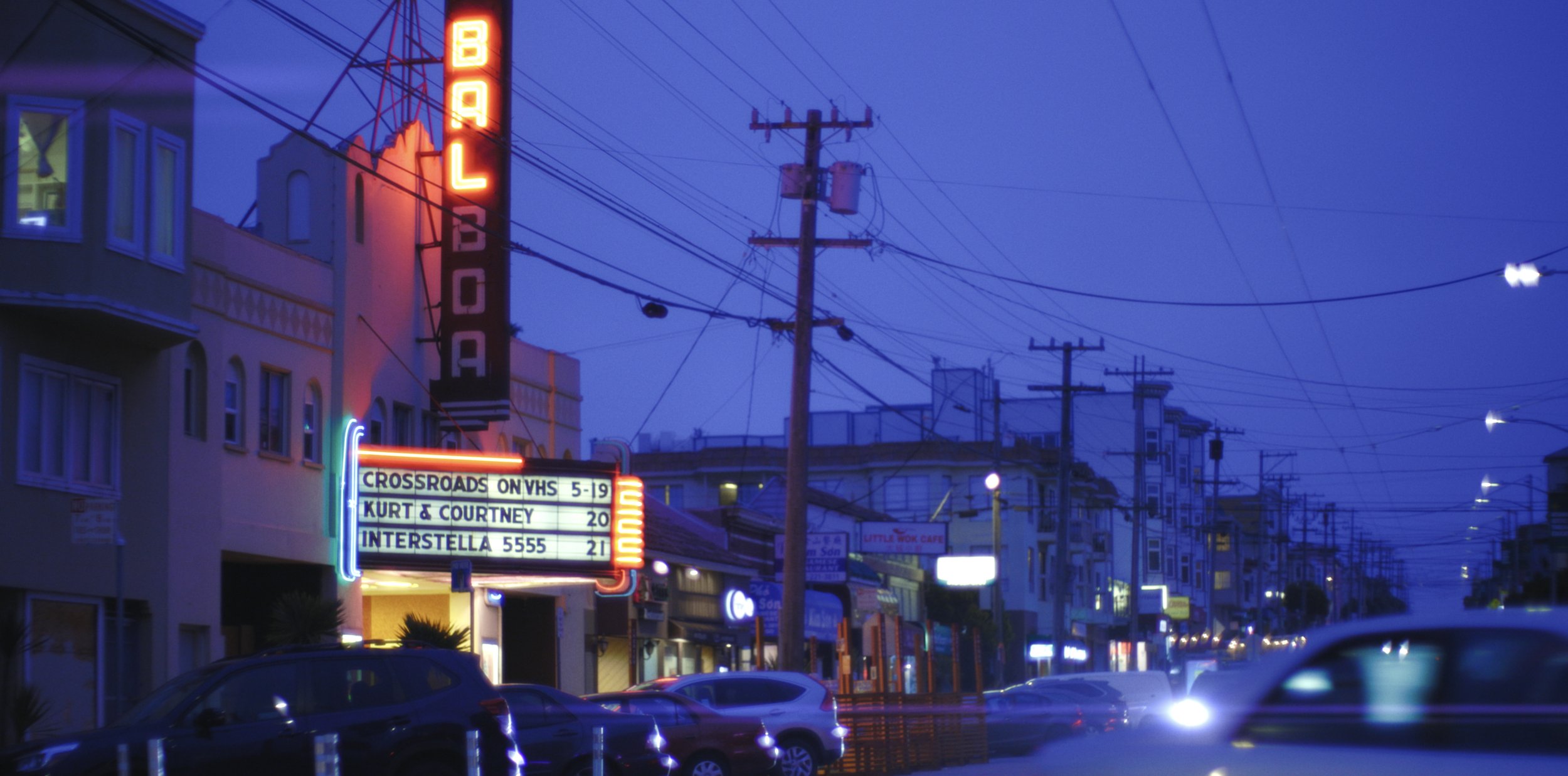The Shape of Light
The Shape of Light chronicles multiple storylines in different neighborhoods of the Bay Area striving to preserve local movie theaters while facing an unprecedented global pandemic, a struggling economy, and a societal increase of individual isolation through the use of personal electronic devices. Over several years, we witnessed the solidarity, inventiveness, and challenges driving these communities to go to great lengths to defend something more meaningful than a building. To many, these spaces are the embodiment of community and belonging at the most physically isolating times recorded in human history.
The Castro Theater is an iconic fixture in the Castro neighborhood and a landmark of LGBTQ history, this 1920s movie palace has had its fair share of transformations over the years. In 2020, after many generations of family ownership, The Castro switched to a new administration by Another Planet Entertainment (APE), a company focused on concert productions. They plan to convert the theater into a music venue, and significantly reduce its film programming. This would mean that the Castro could potentially no longer be considered a movie theater, and would mostly cater to patrons outside the neighborhood. This sets in motion a critical mass of community members and organizations fighting together against the actions proposed by the events company.
The Balboa Theater was built in 1924 as a vaudeville and cinema theater. As theaters become society’s poster child for places to avoid, the team at the Balboa goes through tremendous efforts to keep it afloat and maintain the spirit of the neighborhood community alive. The team that manages the theater explores alternative sources of revenue to take care of their employees, and experiments with events that bring the community together. At first, they sold popcorn on the sidewalk and added outdoor music events. Eventually, they built a parklet with seating to accommodate a growing crowd on weekends. Then, they started running a makeshift, free outdoor cinema with a portable screen, projecting films for neighbors watching from the sidewalk, these community efforts kept the theater afloat and inspired a new appreciation for a space that has become a symbol of the neighborhood's solidarity and unity in difficult times.
The film also portrays the closure of three Bay Area cinemas: Cinemark Theater at San Francisco Westfield Mall, 14 Screening Room Multiplex CGV S.F., and Albany Twin Movie Theater, after 88 years of operation. While not as character-specific as the other storylines, scenes from the last moments of these spaces represent the larger phenomenon of theaters closing around the United States and the world in recent years. These short vignettes will be dispersed throughout the film. The great question posed by this film is, what are we truly losing as a society when we transition from shared, collective participation in experiencing moving images towards more individualized and isolated practices? In this techno-social shift, what is being lost, what’s possible, and what is the risk of not acknowledging these changes and new media-consumption behaviors?
Director & Producer: Andrés Gallegos
Producer: Diana Sánchez Maciel
Producer: Constanza Hevia H.
Editor: Arash Maleki
Consulting Producer: Brenda Ávila-Hanna
Academic advisor: Professor Jen Reck
Academic advisor: Dr. Daniel Bernardi
Learn more: www.theshapeoflight.net



